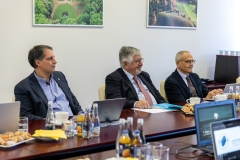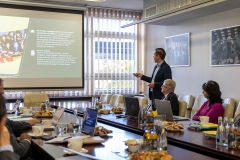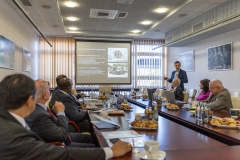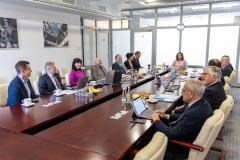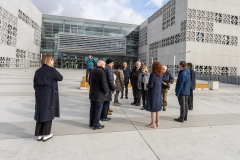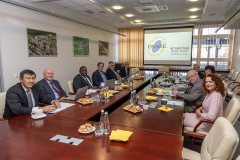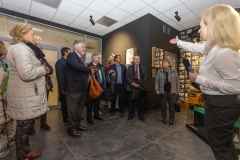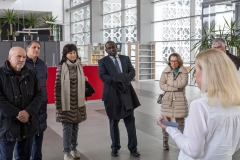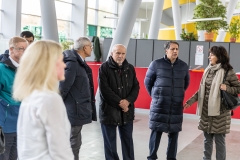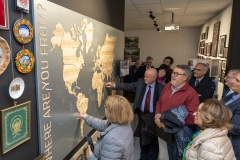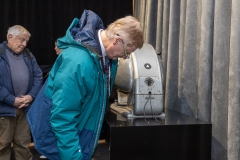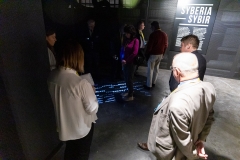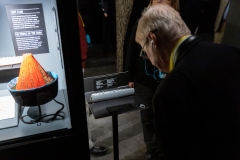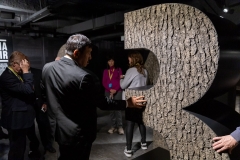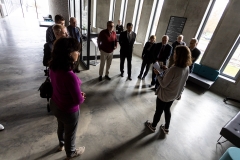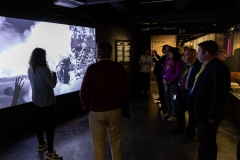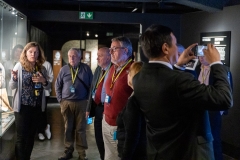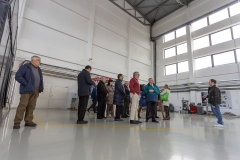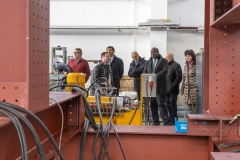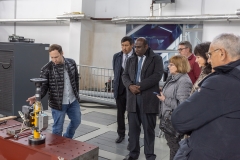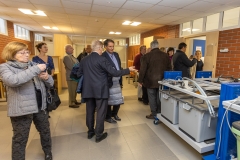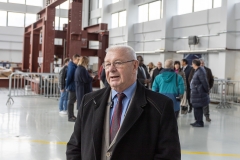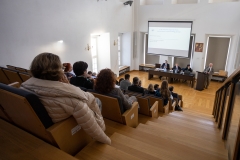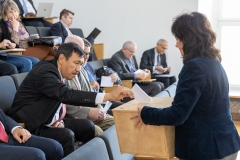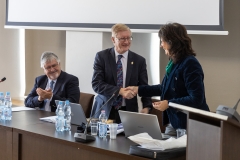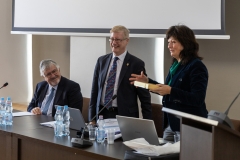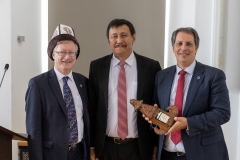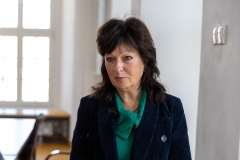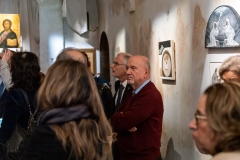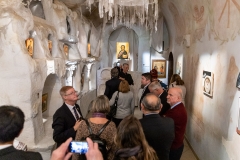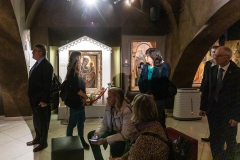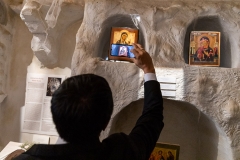European Network of Accreditation of Engineering Education at Bialystok University of Technology
21-10-2022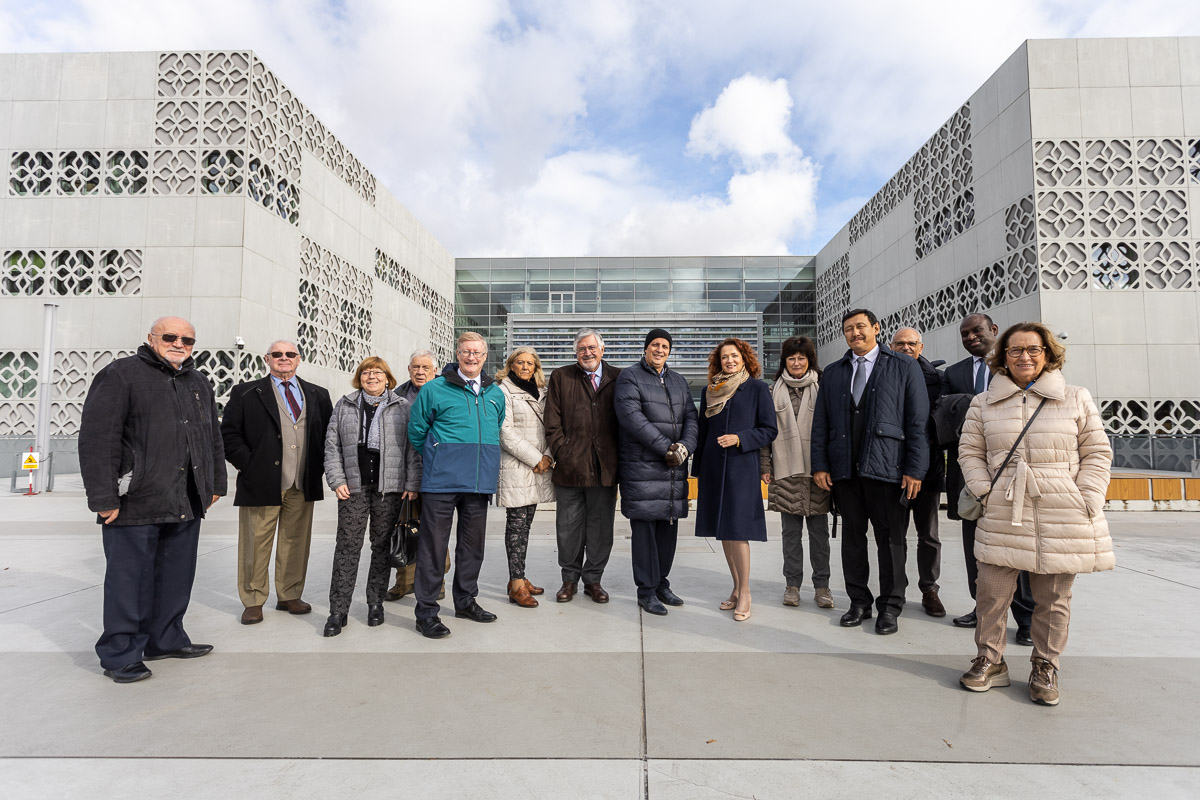
– We hosted the most important representatives of the organisation, which awards European EUR-ACE® Label certificates to engineering fields of study – says Assoc. Prof. Marta Kosior-Kazberuk, DSc, PhD, Eng, Rector of Bialystok University of Technology. – I am very pleased that the members of the Administrative Council and the General Assembly accepted the invitation of Bialystok University of Technology. As the Vice-President of the Administrative Council, I am in the part of the ENAEE that decides on the awarding of the European EUR-ACE® Label certificates across Europe.
One of the highlights was the election of the new ENAEE President. Prof. José Carlos Quadrado from the Polytechnic Institute of Porto and the Latin American and Caribbean Consortium of Engineering Institutions, was elected.
– We are planning to prepare an ENAEE strategic plan that will contribute to the global growth – announces Professor José Carlos Quadrado. – We are already the biggest and the most committed network of engineering programmes accreditation. We would like it to be relevant and a point of reference throughout the world. I’m very proud to be here in Białystok and I’m very proud that my presidency starts here. I’m very happy that Poland and Białystok, will leave such a huge mark also in my career.
The new president also referred directly to the functioning of Bialystok University of Technology within the ENAEE structures.
– The Rector of Bialystok University of Technology is one of the members of the ENAEE Administrative Council and it is through the activities of the Council that we have been able to create many opportunities to develop joint projects, to apply for European projects in which Bialystok University of Technology can participate – says Prof. José Carlos Quadrado. – You are a reference institution in the region and in the country. And therefore you are able to grow and build your potential for even greater collaboration.
During the election of the new president at the Supraśl Academy, the potential of Bialystok University of Technology was highly appreciated by Damien Owens from Engineers Ireland, the previous president of the ENAEE: You have many programmes that meet the standards set down by ENAEE, and so it means that the students have recognition of their education and the quality and standard of the education as they move around. Not just Poland, but move around Europe. Polish graduates are renowned for their technical expertise, but also for their strong attitude to work. In terms of size, it’s probably a smaller university, but I think you can use this to advantage. It means you can specialise in very particular areas where you have strength. It gives you the speed to cooperate and innovate much quicker than in a large university. One thing that’s very important is your links with the local industry. I think that’s something that you can really bring and make advantage of.
Prof. Bohdan Macukow from Warsaw University of Technology, chairman of the Accreditation Commission of Universities of Technology (KAUT) for the 2021 – 2025 term, is of a similar opinion. He appreciates the University’s commitment to the quality of education.
– Bialystok University of Technology is one of the leaders when it comes to the number of KAUT certificates awarded – says Prof. Bohdan Macukow. – Bialystok University of Technology practically started accreditation a few years ago and over these few years it has already 10 accreditations. This is really a lot, it is on the level of Warsaw or Silesian Technical University. Congratulations.
The General Assembly also elected one of the members of the ENAEE Administrative Council. Professor Vincenzo Tucci of the University of Salerno was appointed again.
– This is a very nice team, we exchange views and I am happy to work with such competent colleagues and to contribute my little experience to the team – says Prof Tucci modestly. The scientist from Italy emphasised the good organisation and hospitality of Bialystok University of Technology.
Our guests visited the Centre for Modern Education, the hall and laboratories of the Inno-Eko-Tech: Innovative Research and Education Centre for Alternative Energy Sources, Energy-efficient Construction and Environmental Protection and the Mirosław Bujanowski Centre for History of Bialystok University of Technology.
– Bialystok University of Technology is a very good university – says Ann Van Eycken, Secretary General of ENAEE. – We visited specialised laboratories, that was very interesting
Foreign visitors were enthralled by the unique collection of the Icon Museum in Supraśl, as well as the concept and the building itself of the Sybir Memorial Museum built according to a design by Jan Kabac, MSc, Arch from the Department of Architectural Design at the Faculty of Architecture of Bialystok University of Technology.
– What was indeed impressive was the connection between the rail track and the building – enthuses Ann Van Eycken. – The museum was also very impressive in the sense that you could really feel the touch of history. From the entrance you can see the railway carriage. Then you enter into a kind of a silence room, like a reflection room. When you come into that room with all that white, you feel really cold. So your senses work. Congratulations to the architect because he really could realise this entire project. I hope that many people can see it because it’s still unknown. I will certainly tell it further so that people can really visit this place.
The Secretary General admits that awareness of the Siberian deportations among the public in her country is not widespread.
– It was the first time that I heard the word ‘Sybir’ because we know ‘Siberia’ but not ‘Sybir’ – confesses Ann Van Eycken. – I was really shocked by what I saw. It is history, but very recent history. We did not have this type of history at school, so for me it broadened a little bit my view of what happened here with the Polish people.
The General Assembly of the European Network of Accreditation of Engineering Education took place in the modern auditorium of the Supraśl Academy in Supraśl.
– I must say it’s a very, very green area, very beautiful area and I look forward to see more – confesses Van Eycken.
ENAEE (European Network for Accreditation of Engineering Education) is an organisation of national agencies or other accreditation bodies. The purpose of the network is to build confidence in accreditation systems for engineering programmes, to develop standards for competence requirements of engineering graduates, and to develop appropriate agreements for accreditation of engineering studies and recognition of engineering qualifications. ENAEE currently brings together national accreditation organisations concerned with the quality of engineering education at universities in Ireland, Finland, France, Spain, Kazakhstan, Germany, Poland, Portugal, Russia, Romania, Slovakia, Switzerland, Turkey, the United Kingdom, Italy.
One of the main activities of the ENAEE network is the EUR-ACE – European Accredited Engineer accreditation programme. This programme is closely linked to the Bologna Process and is based on the guidelines contained in the document “Framework Standards and Guidelines” (EAFSG). The result of ENAEE accreditation is the EUR-ACE® Label, which confirms the high level of quality of the engineering education programme and its compliance with accepted European standards and principles. The EAFSG was last updated in 2021. Prof. Marta Kosior-Kazberuk was part of the Working Group that worked on the update.
In Poland, the authority to award the EUR-ACE® Label, granted by ENAEE, is held by the Accreditation Commission of Universities of Technology, which, together with the national accreditation of faculties, also awards the EUR-ACE® Label quality certificate.
Nine fields of study at Bialystok University of Technology got such accreditation:
- Automatic Control and Robotics – first and second cycle studies
- Eco-power Engineering – first cycle studies
- Electrical Engineering – first and second cycle studies
- Electronics and Telecommunication – first and second cycle studies
- Computer science – first and second cycle studies
- Information technology and econometrics – first cycle studies
- Biomedical engineering – first and second cycle studies
- Logistics – first cycle studies
- Mechanics and Construction of Machinery – first and second cycle studies
- Management and Production Engineering – first and second cycle studies
The EUR-ACE® Framework (EAFS) defines the objectives of engineering programmes, i.e. the knowledge, skills and social competences required of graduates with an engineering degree and the professional title of magister (MSc). Obtaining the EUR-ACE® Label is an additional verification and confirmation for the university of the high quality of the students’ education and that the educational programme meets the standards set by European professional organisations. For the student it is a certainty that the chosen field of study meets international standards and gives the opportunity to gain the title of European Engineer (Eur Ing). On the other hand, an employer who employs a graduate of the certified course obtains an assurance that the candidate’s competences in the field of knowledge and practical skills do not deviate from international standards and principles of engineering education.
The ENAEE Administrative Council consists of ten persons, normally elected by the General Assembly for three years.
Its main tasks are to:
- consider and decide on recommendations from the various committees,
- manage the activities of ENAEE and
- make proposals to the General Assembly about policies, membership, and financial issues..
ENAEE is led by a President, two Vice-Presidents and a Treasurer, who are also members of the Administrative Council. Currently, there are nine members of the Administrative Council.
We would like to thank the Icon Museum in Supraśl, Branch of the Podlaskie Museum in Bialystok, a cultural institution of the Podlaskie Voivodeship co-managed by the Ministry of Culture and National Heritage, for the opportunity to take photographs and film in the exhibition spaces of the Icon Museum in Supraśl, Branch of the Podlaskie Museum in Bialystok.
by jd
